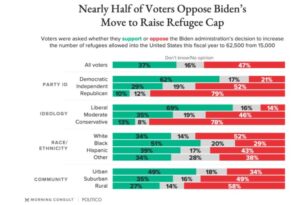The following article by Ruy Teixeira, author of The Optimistic Leftist and other works of political analysis, is cross-posted from his blog:
Perhaps It Takes a European Observer To See the Democrats’ Fundamental Political-Economic Problem Clearly
Jean Pisani-Ferry is at the Brussels-based think tank Bruegel. In an article on Project Syndicate he observes:
“The Biden administration’s promises to “think big” and rebuild the country seem like a major historical departure from decades of policy orthodoxy. And yet, insofar as its agenda will merely help the United States catch up to other advanced economies, its main components amount to necessary but insufficient reforms.”
He focuses particularly on the Democrats’ fundamental political problem and links it to the difficulties of the left in other advanced countries:
“[S]uch reforms are unlikely to suffice to address the Democrats’ political problem. Their challenge is that white voters without a college degree – who formed the backbone of Trump’s support – still make up 41% of the electorate. Even assuming that new voting laws in many Republican-led states do not overly suppress black turnout, the Democratic coalition of black voters and educated elites remains at the mercy of a shift in public sentiment, leaving the party without a strong enough majority in the right places to guarantee victory in the Electoral College in 2024.
The Democrats’ imperative is to recapture the white working-class voters who backed Trump in 2016 and 2020. But since Bill Clinton’s presidency in the 1990s, the party has offered left-behind workers only two solutions: education and social benefits. As The Atlantic’s Ronald Brownstein recounts, Clinton’s mantra was that, “What you learn is what you earn.” He and Barack Obama strongly believed that more and better education was the best way to deal with the labor-market upheavals brought about by digitalization and globalization. (Europeans mostly shared this philosophy, though they placed a greater emphasis on social transfers.)
But workers do not agree. They do not want to live on welfare, but nor do they want to be sent back to school. Rather, they want to keep the good jobs that have long provided them with incomes and a sense of pride. Trump won in 2016 because he understood this sentiment and exploited it to win the working-class vote in key swing states.
And it’s not just America. Everywhere one looks, the left has lost the working-class vote. In the United Kingdom, Prime Minister Boris Johnson has conquered Labour’s “Red Wall”; in France, far-right leader Marine Le Pen has emerged as the candidate of choice for a growing share of workers; and in Germany, the Social Democrats seem likely to be crushed in the September elections. As Amory Gethin, Clara Martínez-Toledano, and Thomas Piketty show in a fascinating comparative paper, the traditional cleavages that structured postwar politics have collapsed across Western democracies.
Biden clearly understands this political shift. Last month, in his first address to a joint session of Congress, he made a point of noting that nearly 90% of the jobs created by his infrastructure plan will not require a college degree. But how can his administration actually deliver good jobs?”
That’s the question. And it’s not at all clear the Biden administration has a good answer to this and, therefore, to its fundamental political problem.




